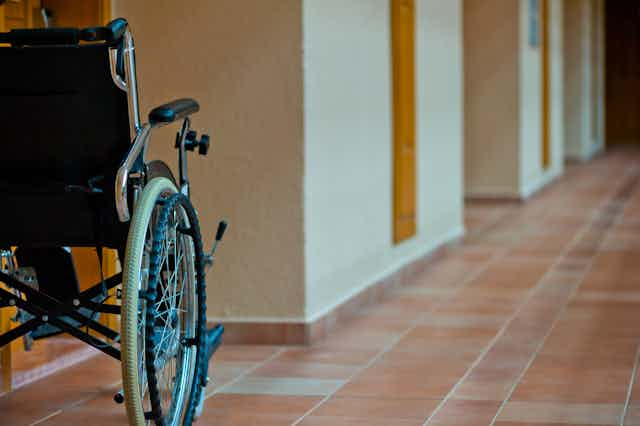Violence, abuse and neglect of people with disabilities have historically been driven by exclusion, discrimination and institutionalisation. While the disability system has undergone significant and important reforms over the past three decades, many problems remain. We’re still failing to protect people with disabilities.
Three current inquiries – by the Australian Senate, Victorian Parliament and Victorian Ombudsman – are currently investigating the problem, along with the Royal Commission into Institutional Responses to Child Sexual Abuse. But while we’re still working out the extent of the problem, it’s not too early to act.
Here’s what we know so far.
High risk of abuse
People with disabilities have a high risk of experiencing violence, abuse and neglect – in public facilities, private facilities and within the community. While national figures are not available, within Victorian disability services alone 410 assaults were reported in 2013-2014.
The risk of abuse is exacerbated if people have little or no functional speech and no means to report abuses when they occur. More than 90% of women with severe communication disorders, for instance, suffer abuse.
People with disabilities are also at increased risk of neglect. The 2015 New South Wales Ombudsman’s report on preventable deaths of people in care noted that deaths from choking, falls, fractures or lack of appropriate health care were all preventable.
The abuse of people with disabilities is sometimes gendered and disability-specific. Women are abused by carers through the control of finances, withholding medication and limiting access to aids and equipment. They also experience domestic and family violence, and sexual assault at higher rates than women without disabilities.
However, mainstream domestic violence services such as refuges, counselling and other domestic violence supports are largely inaccessible to them.
According to the Victorian Public Advocate, abuse against people in Yooralla disability services in Victoria – which has resulted in convictions of two Yooralla staff – are the tip of the iceberg. There is a broad spectrum of abuses, including male carers physically and sexually abusing women with a disability, and staff applying unlawful restraint, such as physical force or medication to control client behaviour. People with disabilities also perpetrate violence and abuse against each other in residential services.
Reports tabled in the Victorian parliament and given to government departments, and people with disabilities’ own stories, recount frightening abuse and neglect. Some but not all of these cases are reported to police.
People with disabilities also struggle to gain justice through the courts. Many abuse cases do not proceed, often because people with disabilities are seen as unreliable, not credible or incapable of being a witness. As the Australian Human Rights Commission notes, incorrect assessments are being made about the legal competence of people with disabilities.
Overcoming the barriers to justice
The Victorian Ombudsman last month highlighted that the oversight arrangements for reporting and safeguarding violence, abuse and neglect were “fragmented, complicated and confusing”.
Individual barriers to justice include having no way of telling others about the abuse. This is particularly relevant for people with little or no functional speech or access to communication aids. Not being believed is another clear issue for people who are seen as not having the capacity to understand their experiences.
Other barriers are more systemic and include the complex internal incident reporting systems in government and funded disability services and the inaccessibility of courts and other parts of the justice system.
People with disabilities need better access to information about abuse, their right to safety and avenues for reporting and talking about their experiences. A peer-led program about respectful relationships, Living Safer Sexual Lives, aims to do just this.
Developed at La Trobe University and coordinated by the first author at Deakin University, the program provides information about abuse and gives people a safe place to talk about their own experiences. For some, this means disclosing abuse.
Responsive and accessible counselling and advocacy are also needed. The Victorian Making Rights Reality is one such program that focuses on victims of sexual abuse with a cognitive impairment.
Program evaluations show good outcomes when sexual assault services develop and use resources targeted at this group’s specific needs and abilities. Targeted legal advocacy also leads to more positive justice outcomes including access to victim of crime compensation.
Building on the work of Making Rights Reality, the first author is leading a national research program to identify response service models that are working with women and girls with disabilities. The aim is to develop national guidelines to improve the response practices and approaches in violence and abuse response services.
We need to hold people who perpetrate or sanction violence, abuse and neglect of people with disabilities to account. This requires legal reform, funding reform and a zero-tolerance approach. It’s also vital that the safeguarding framework of the National Disability Insurance Scheme takes a zero-tolerance stance and develops a rights-based approach to reporting and responding.

